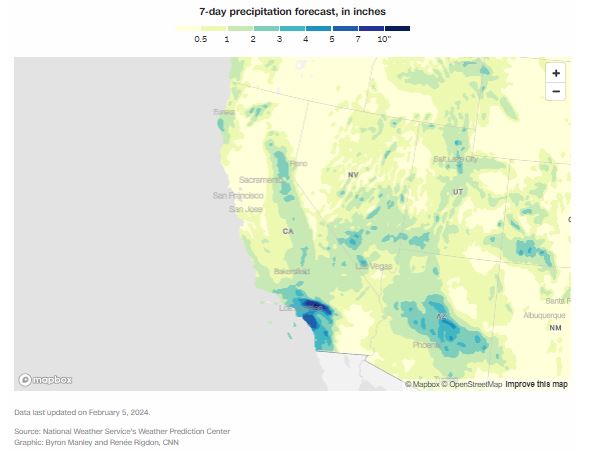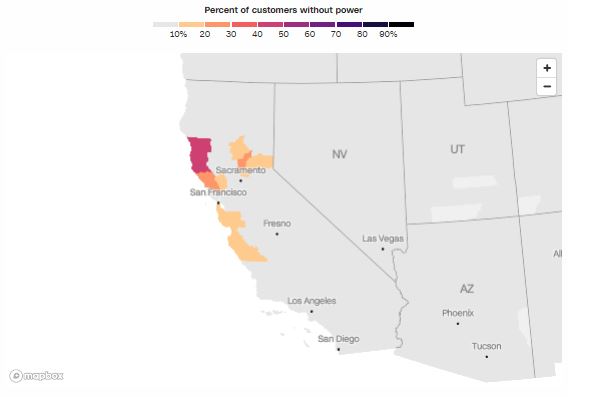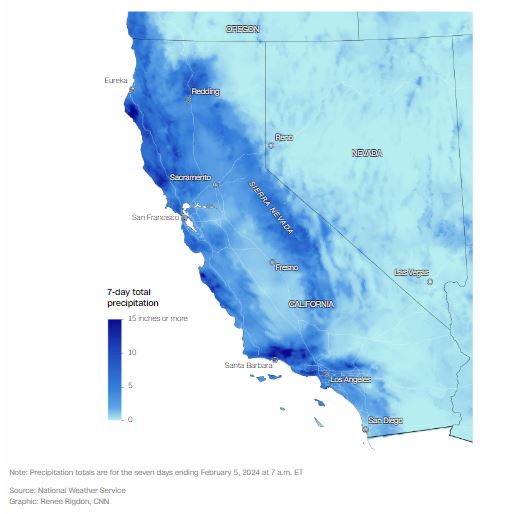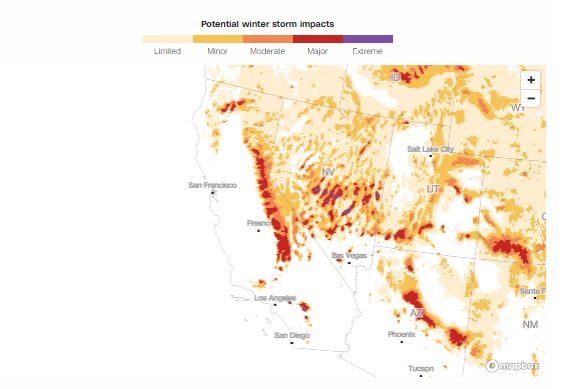
(CNN) — Rain continues to fall in Southern California Tuesday from an atmospheric river, raising the risk for additional mudslides with more than 120 reported so far in the Los Angeles area.
Several roadways were flooded in southern California as of Tuesday afternoon, according to California Highway Patrol reports.
Several waterways also experienced flooding on Tuesday in Los Angeles and surrounding areas, including the Los Angeles River, according to Floodbase, a company that uses satellite data and AI technology to map flooding.

Mandatory Credit: PowerOutage.us/CN
The rain and threats of flash flooding will expand Tuesday into western Arizona, southern Nevada and southwestern Utah as the storm system moves east.
The storm is the second to hit the state over the last week with heavy rain and snow and totals are adding up.
A widespread 2 to 5 inches of rain has fallen across the coastal parts of the state, with more than 10 inches reported in the foothills around Los Angeles. Nearly half a year’s worth of rain has fallen in downtown Los Angeles since Sunday — the wettest day there in nearly 20 years.

Mandatory Credit: National Weather Service/ Renée Rigdon, CNN
More than 200,000 customers were left without power on Monday evening, according to poweroutage.us, after the storm’s hurricane-force winds peaked Sunday.
Scientists are pointing to two factors that are enhancing the rainfall and destructive power of this week’s storm: the climate crisis and El Niño. California, which just recently recovered from a historic megadrought that triggered water restrictions, has seen a deluge of heavy rain and snowstorms since last winter. These dramatic swings between the two extremes — extreme drought and high precipitation — also known as weather whiplash, is another phenomenon that scientists warn will occur more often under a warming planet in the coming decades.

Mandatory Credit: NOAA Winter Storm Severity Index/ Byron Manley, Matt Stiles and Curt Merrill, CNN
—CNN’s Mary Gilbert, Christina Maxouris, Brandon Miller and Rachel Ramirez contributed to this report
The-CNN-Wire


